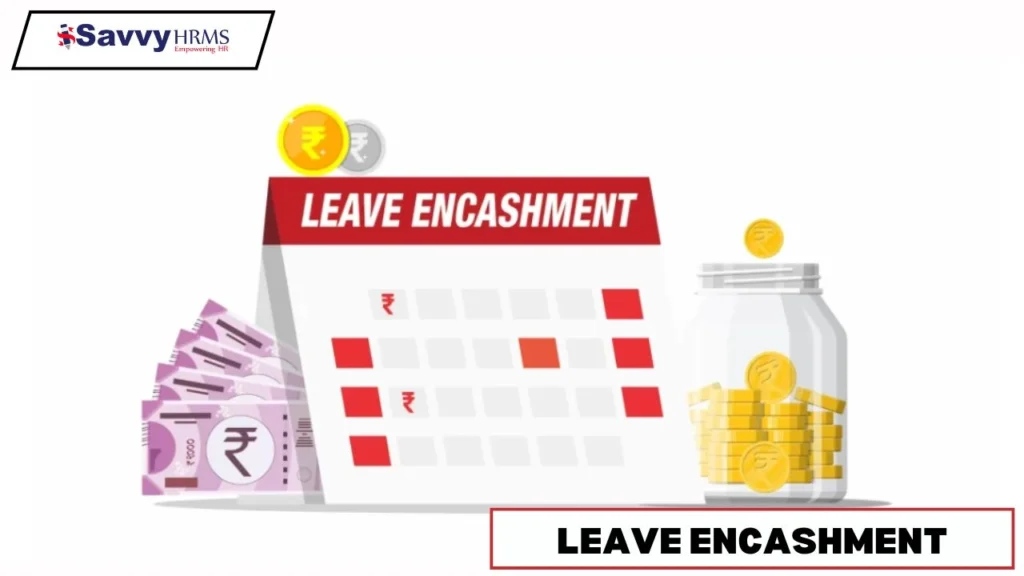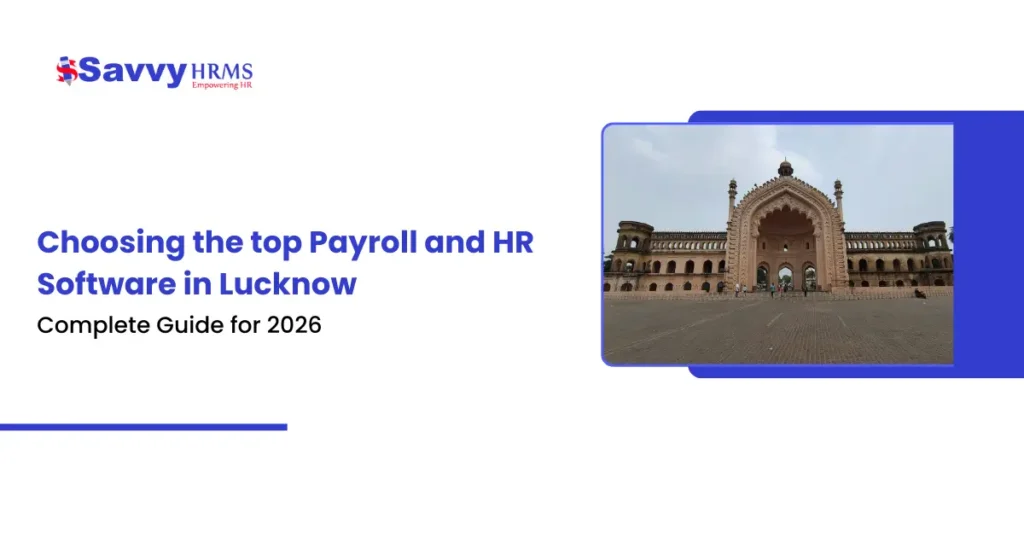Every year, you take some leaves from work. But what if you don’t use all of them? Where does that unused leave go? Can you turn it into money? This is exactly what leave encashment is about.
Leave encashment is when your company gives you cash for the leaves you didn’t use. Instead of losing those days, you can convert them into money. This is especially helpful when you leave your job or retire.
In this guide, we’ll explain everything about leave encashment in simple words. You’ll learn what it is, how it works, how to calculate it, and what taxes you might have to pay.
What Is Leave Encashment?
Leave encashment is a payment you receive from your company for the earned leaves you didn’t take during your time there.
Think of it like this: Your company gives you a certain number of leave days every year. You use some of them for vacation or emergencies. But the ones you don’t use? You can ask your company to pay you for those unused days instead of losing them.
When Can You Get Leave Encashment?
You can receive leave encashment in three situations:
1. When You Leave Your Job (Resignation)
If you resign from your job, your company must pay you for all your unused leaves as part of your final settlement.
2. When You Retire
When you retire after many years of service, you can encash all your accumulated unused leaves.
3. During Your Employment (Optional)
Some companies allow you to encash leaves while you’re still working. This depends on your company’s policy.
Which Types of Leave Can Be Encashed?
Not all leaves can be turned into money. Only certain types of leaves are eligible for encashment. Let’s understand which ones:
1. Earned Leave (Privilege Leave)
This is the main leave you earn every year based on how long you work. You typically get between 12 to 20 days of earned leave per year. This leave can definitely be encashed when you leave your job or retire.
2. Casual Leave
This is short-term leave (usually 7 to 10 days per year) for personal reasons or emergencies. Whether you can encash casual leave depends on your company’s policy. Many companies allow it, but some don’t.
3. Sick Leave or Medical Leave
This leave is for when you’re ill and can’t work. Some companies allow encashment of sick leave, but many don’t. Check your company’s policy to be sure.
Leaves That CANNOT Be Encashed
1. Maternity Leave
This leave is provided to pregnant women to support their health and well-being during pregnancy and after childbirth. It is meant strictly for rest and recovery and therefore cannot be encashed under any circumstances.
2. Paternity Leave
This leave is granted to fathers so they can support their partner and bond with their newborn child. Since it is intended for family care and personal time, it cannot be encashed.
3. Bereavement Leave
This leave is given when an immediate family member passes away, allowing employees time to grieve and manage related responsibilities. Because it serves an emotional and compassionate purpose, it cannot be encashed.
4. Unpaid Leave
This type of leave does not come with salary or monetary benefits. As it is taken without pay, it cannot be encashed by the employee.
5. National Holidays & Festival Holidays
These holidays are mandated by the government or recognized as official festival days. They are fixed, universally observed, and already compensated as part of the work calendar, so they cannot be encashed.
How Much Leave Can You Encash? Understanding Carry-Forward & Limits
Your company probably has rules about how many leaves you can save up. Let’s understand this:
Carry-Forward Policy
Most companies allow you to carry forward unused leaves to the next year. But there’s usually a limit.
- Many companies allow you to carry forward up to 30 days of earned leave
- Some allow up to 45 to 60 days depending on their policy
- Any leaves beyond this limit are usually lost or automatically encashed
Why Do Companies Set These Limits?
Companies set these limits for two important reasons:
1. To encourage employees to take leave regularly
Taking leave is important for your health and well-being. Companies want you to actually use your leaves.
2. To manage their financial responsibility
If employees keep saving leaves year after year, the company’s financial obligation keeps growing. This can become a big expense when many employees leave at the same time.
Leave Encashment Policy: What Your Company Should Have
A good leave encashment policy should clearly explain:
When You Can Encash Leaves
- During employment (if allowed)
- At resignation
- At retirement
- During termination
How Much You Can Encash
- Maximum number of days that can be carried forward
- Limits on encashment amount
- Which types of leaves qualify
How It’s Calculated
- The formula used
- Salary components included (basic salary, DA, etc.)
- When the calculation is done (based on salary at the time of encashment)
Tax Rules
- Whether it’s taxable during service
- Tax exemptions at resignation or retirement
- How to claim exemptions
How to Calculate Your Leave Encashment: Easy Step-by-Step Guide
Now let’s learn the actual formula and how to calculate leave encashment. Don’t worry, it’s simpler than it sounds!
The Leave Encashment Formula
Leave Encashment = (Basic Salary + Dearness Allowance) ÷ 30 × Number of Unused Leave Days
Let’s break this down:
Basic Salary + Dearness Allowance (DA):
Only these two parts of your salary are used in the calculation. Other allowances like HRA (house rent), travel allowance, or bonuses are NOT included.
Why Dearness Allowance?
DA is added to your salary to account for rising prices and inflation. That’s why it’s included in the calculation.
÷ 30:
A month is considered to have 30 days for this calculation.
× Number of Unused Days:
This is the total number of leave days you haven’t used.
Is Leave Encashment Taxable? Understanding the Tax Rules
This is an important question. Do you have to pay income tax on the money you receive from leave encashment? Let’s find out:
Rule 1: Leave Encashment During Your Employment (While Still Working)
Tax Status: Fully Taxable
If you encash leaves while you’re still employed at the company, the entire amount is added to your salary and you have to pay income tax on it. It’s treated like regular salary income.
However, you can claim some tax relief under Section 89 of the Income Tax Act by filling Form 10E.
Rule 2: Leave Encashment at Resignation or Retirement
Tax Status: Partially Exempt (for private sector employees)
This is good news! When you leave your job or retire, the tax treatment is different and better for you.
For Government Employees:
Fully exempted from tax. You don’t pay any tax on the leave encashment amount at retirement.
For Private Sector Employees:
The amount is partially exempted from tax, up to a limit of ₹25 lakhs (since April 2023).
Rule 3: Leave Encashment in Case of Death
Tax Status: Fully Exempt
If an employee passes away, the leave encashment paid to their family members or nominees is completely tax-free.
How Much Tax Do You Actually Have to Pay? The ₹25 Lakh Limit Explained
In April 2023, the government increased the tax exemption limit for private sector employees from ₹3 lakhs to ₹25 lakhs. This is a big increase!
But what does this actually mean? Let’s break it down:
The Four Conditions for Tax Exemption
1. The Actual Leave Encashment Amount You Received
This is the exact amount of money your employer paid you as leave encashment at the time of resignation, retirement, or termination.
2. The Maximum Limit: ₹25 Lakhs
This is the upper cap set by the government. Even if your eligible calculation exceeds this limit, the tax exemption cannot go beyond ₹25,00,000 over your entire lifetime.
3. Your Average Salary for 10 Months
This is calculated based on:
(Basic Salary + Dearness Allowance) × 10 months
The salary considered is the average of the last 10 months immediately before your retirement or resignation.
4. The Cash Equivalent of Your Unused Leave
This represents the monetary value of your unused accumulated leave. It is calculated as:
(Salary per day) × (Maximum 30 days per year × Total years of service)
Only a maximum of 30 days of leave per year is considered for this calculation, even if your company allowed you to accumulate more.
Important Court Case: Why Leave Encashment Is Your Right
There’s an important court decision you should know about. In 2024, the Bombay High Court ruled on a case involving leave encashment:
Case: Dattaram Sawant & Anr. v. Vidarbha Konkan Gramin Bank
Two employees, Dattaram and Seema, worked at the bank for over 30 years. When they resigned, they had accumulated 240 days of unused privilege leave. The bank refused to pay them the leave encashment amount of ₹6,57,554 and ₹4,66,830 respectively.
What Did the Court Decide?
The Bombay High Court ruled that leave encashment is a statutory right similar to regular salary. It’s like a property that belongs to you, protected by the Constitution. The court held that:
- An employer cannot deny leave encashment just because an employee resigned
- Leave encashment is earned by the employee through their service
- The employer must pay the full amount along with interest
Why Is This Important for You?
This means leave encashment is not just a benefit the company can give or take away. It’s your right as an employee. Even if you resign, your company cannot refuse to pay you for your unused leaves.
Carry Forward vs. Encashment: Which Should You Choose?
You have a choice when it comes to unused leaves. You can either:
Option 1: Carry Forward Your Leaves
What It Means:
You save your unused leaves for the next year. You can use them later for vacation or emergencies.
Advantages:
- You get more time off in the future
- You don’t lose your leaves
- Useful if you’re planning a long vacation
Disadvantages:
- Your leave balance can accumulate too much
- If the limit is reached, leaves beyond that might be lost
- You might lose them if you leave the company
Option 2: Encash Your Leaves
What It Means:
You convert your unused leaves into money and receive it in your salary.
Advantages:
- You get immediate money
- Useful at the time of resignation or retirement
- Helps with financial planning
- Leaves don’t expire
Disadvantages:
- You lose the benefit of having extra time off
- You might have to pay income tax
Which Is Better?
This depends on your personal situation. If you need money right now, encash the leaves. If you want more time off later, carry them forward. Many employees do a mix of both.
Your Rights as an Employee for Leave Encashment
Remember these important points about leave encashment:
1. It’s Your Earned Benefit
Leave encashment is a financial benefit you accumulate through your work, discipline, and years of service. It is not a goodwill gesture from the company—it’s money you have rightfully earned by not taking certain leaves.
2. It’s Protected by Law
Courts have recognized leave encashment as a statutory and enforceable right. This means your employer is legally obligated to pay you your leave encashment amount as per policy, and it cannot be denied arbitrarily.
3. Calculate It Correctly
Always ensure the encashment amount is computed using the correct formula. Compare your employer’s calculation with the official method to confirm accuracy and avoid underpayment.
4. Understand Your Tax Liability
Leave encashment may be fully, partially, or not at all exempt from tax depending on your employment type and the applicable rules. Keep all supporting documents and calculations to ensure smooth and accurate tax filing.
5. Claim Your Tax Benefits
If you qualify for tax exemptions, make sure to claim them when filing your Income Tax Return (ITR). Proper documentation ensures you don’t miss out on benefits legally available to you.
Conclusion
Leave encashment is an important employee benefit that puts money into your pocket for leaves you didn’t use. By understanding how it works, you can:
- Calculate exactly how much money you should receive
- Plan your finances better
- Know your rights as an employee
- Avoid being cheated by incorrect calculations
- Claim the tax benefits you’re entitled to
Whether you’re still working, planning to resign, or getting ready to retire, leave encashment is valuable compensation that you’ve earned. Make sure you understand it, calculate it correctly, and claim what’s rightfully yours.
The recent increase in tax exemption limits to ₹25 lakhs is a big step toward recognizing the value of employee benefits. Use this knowledge to make informed decisions about your career and finances.
With tools like Savvy HRMS, employees and organizations can manage leave records, calculations, and compliance more easily, ensuring complete transparency and accuracy in every step of the leave encashment process.



